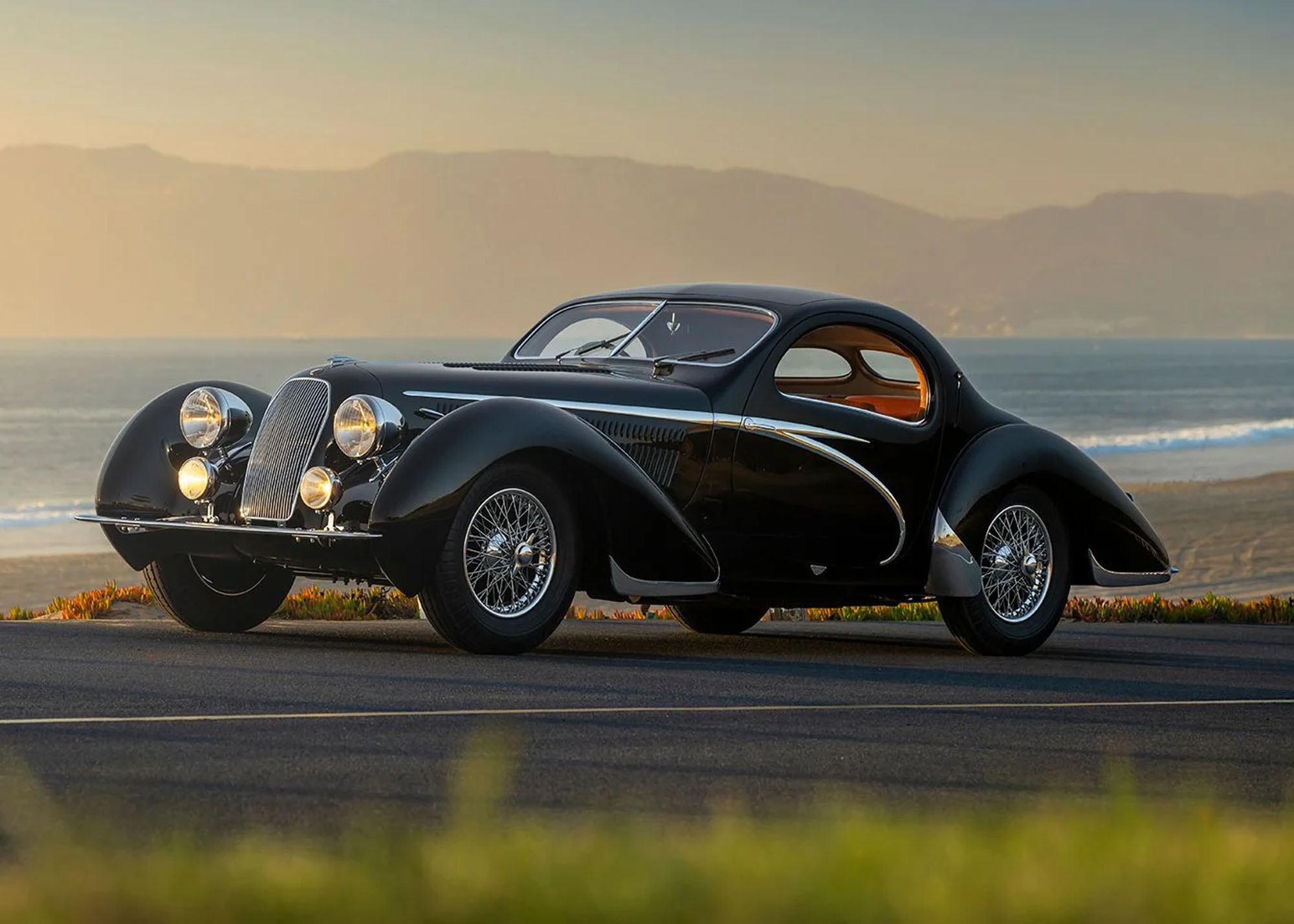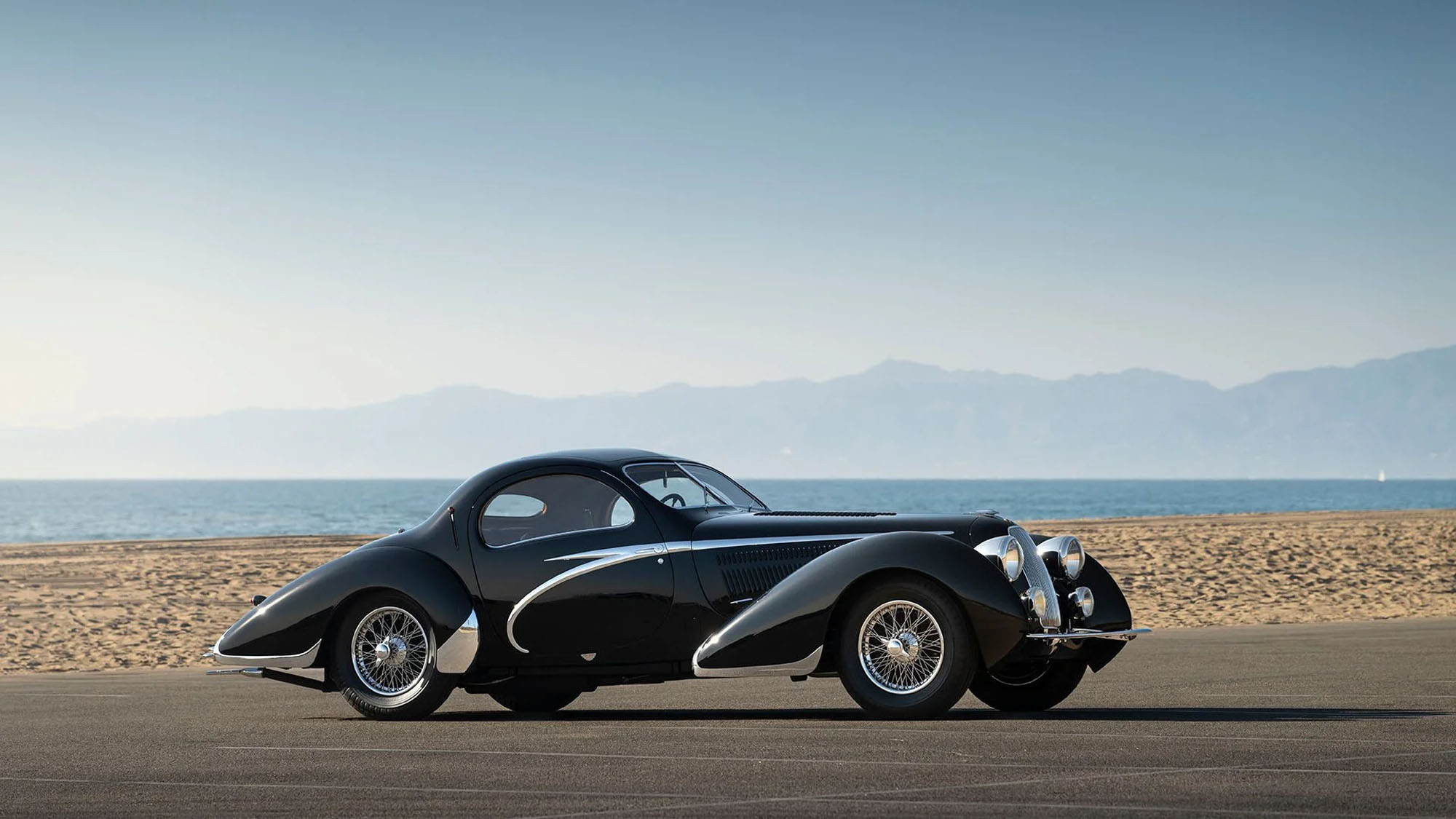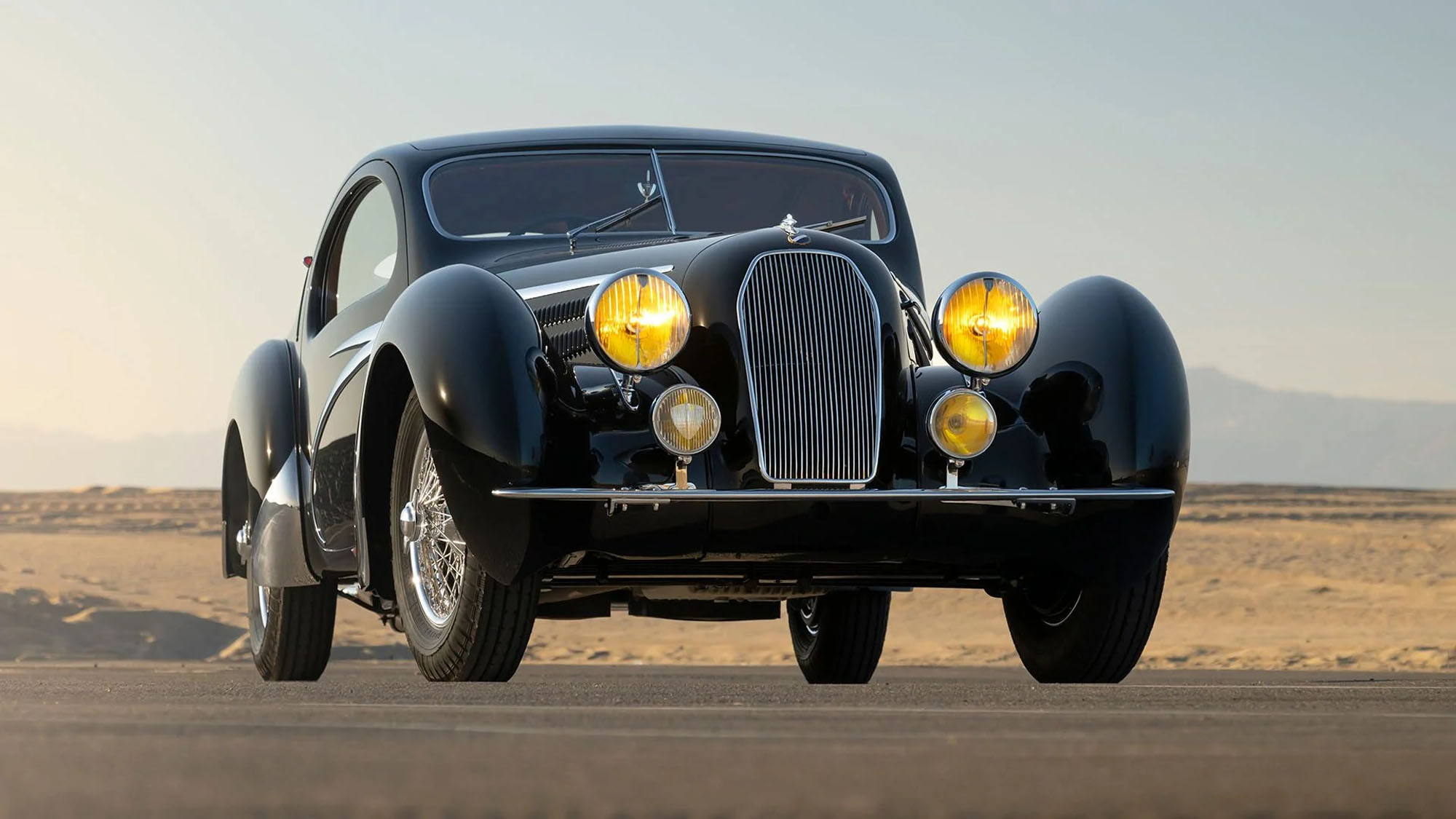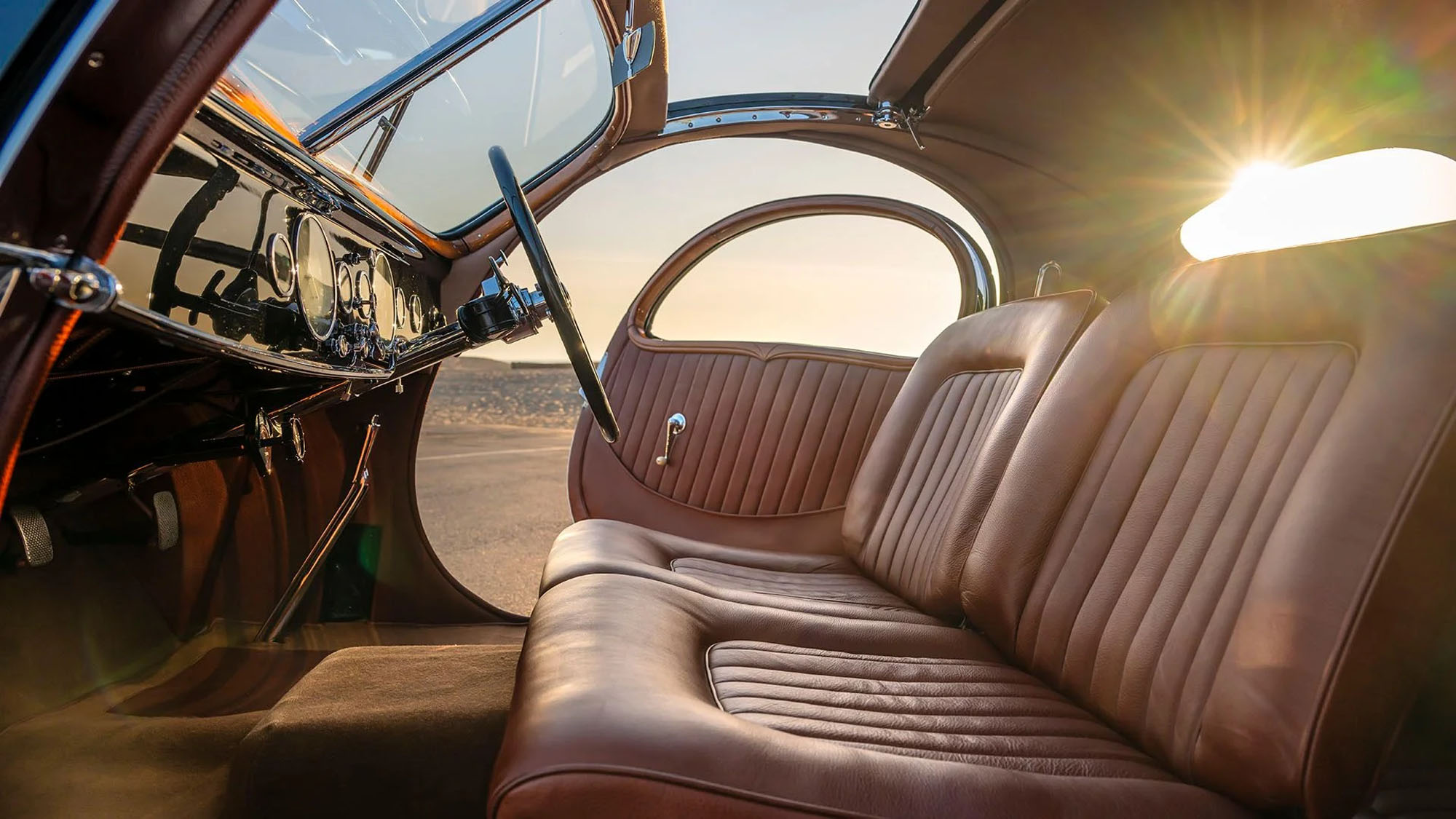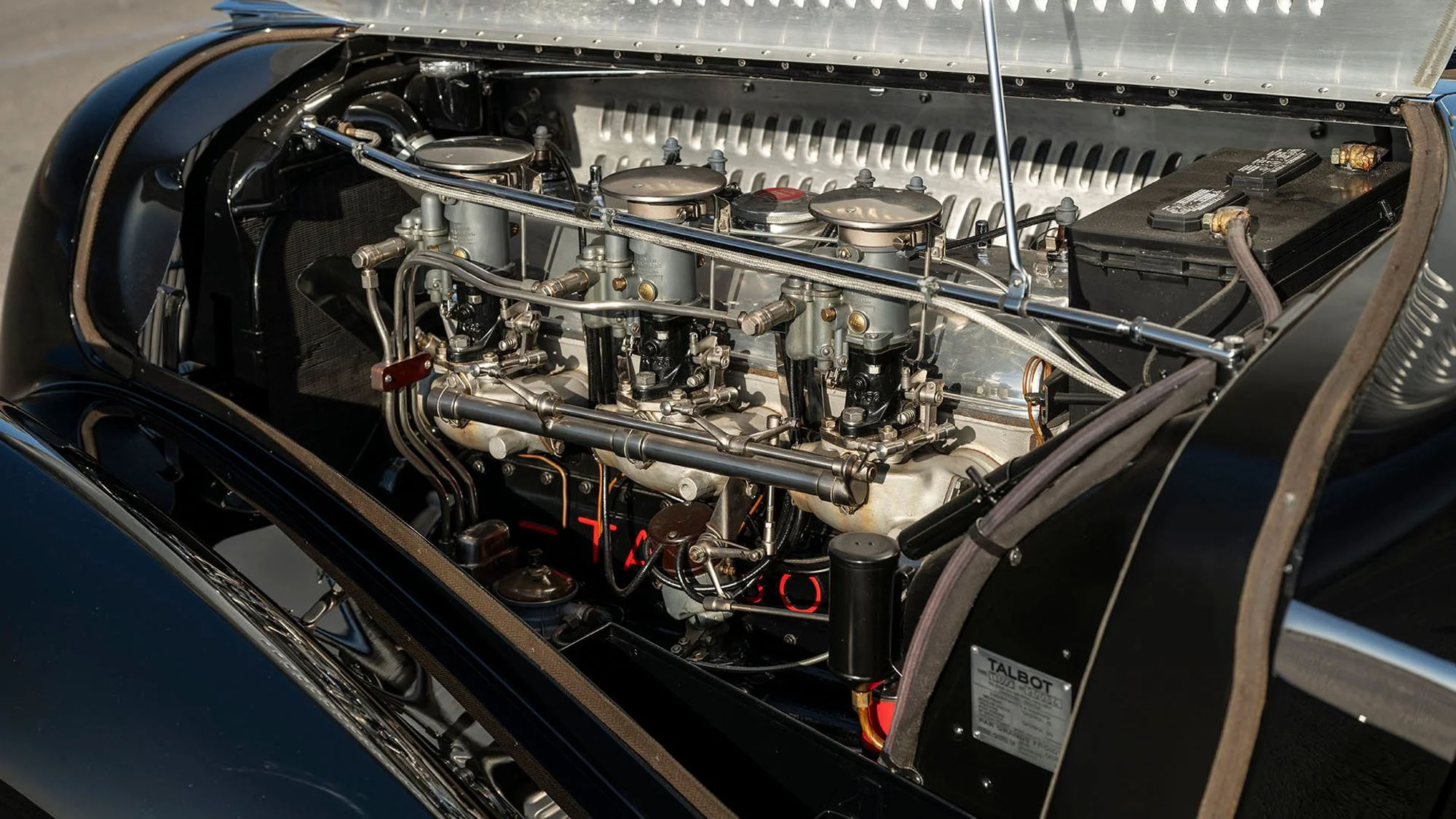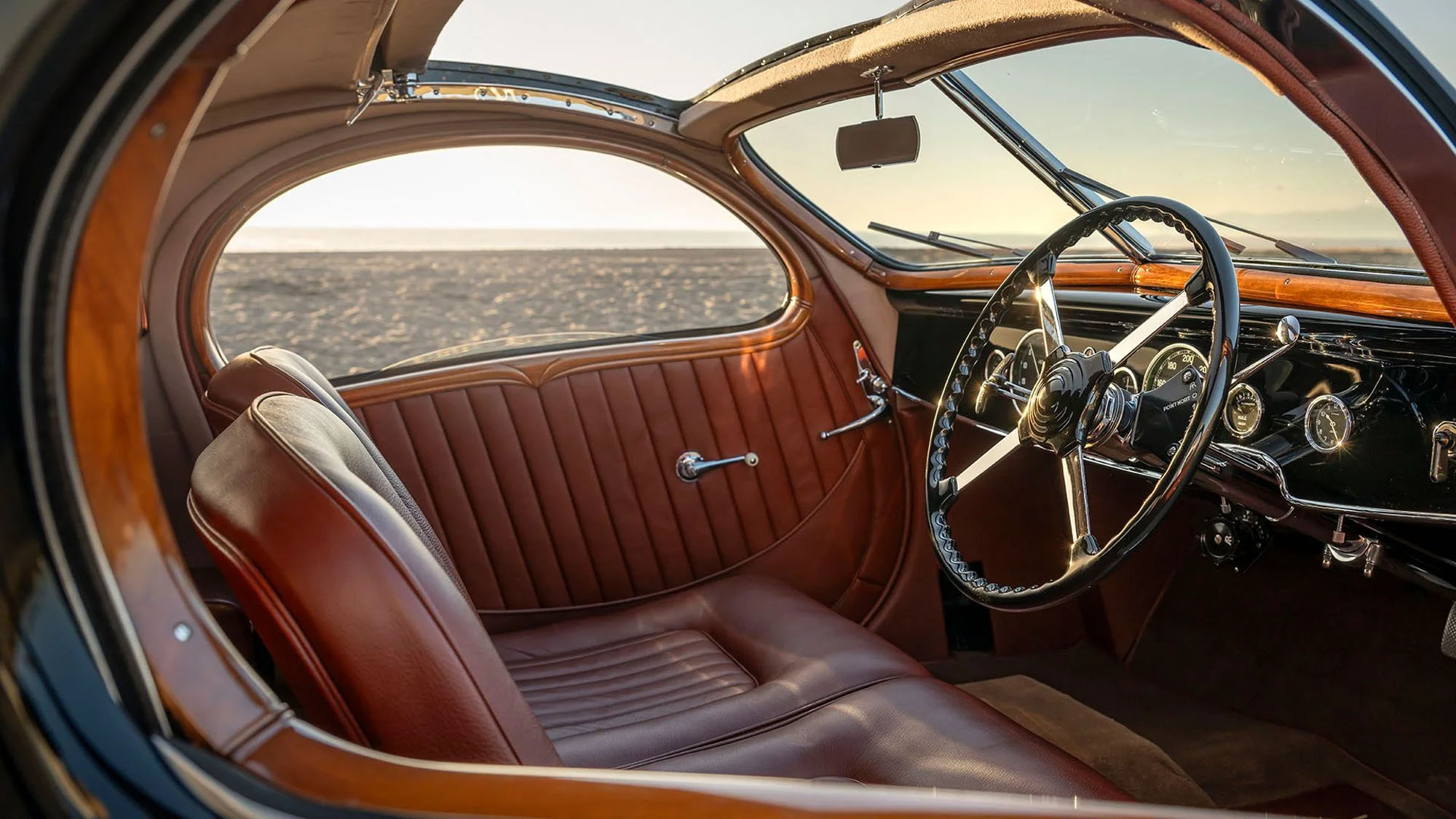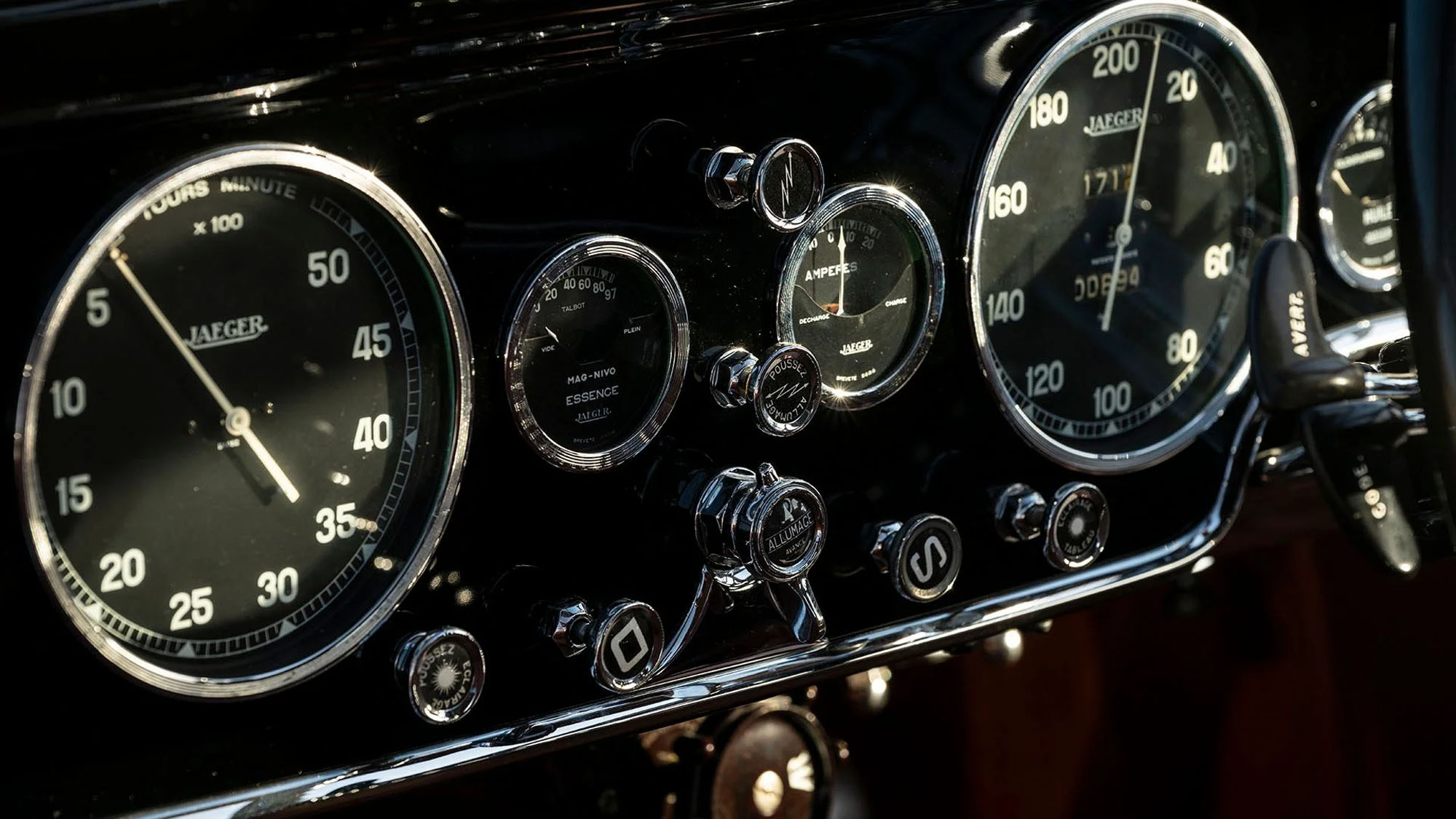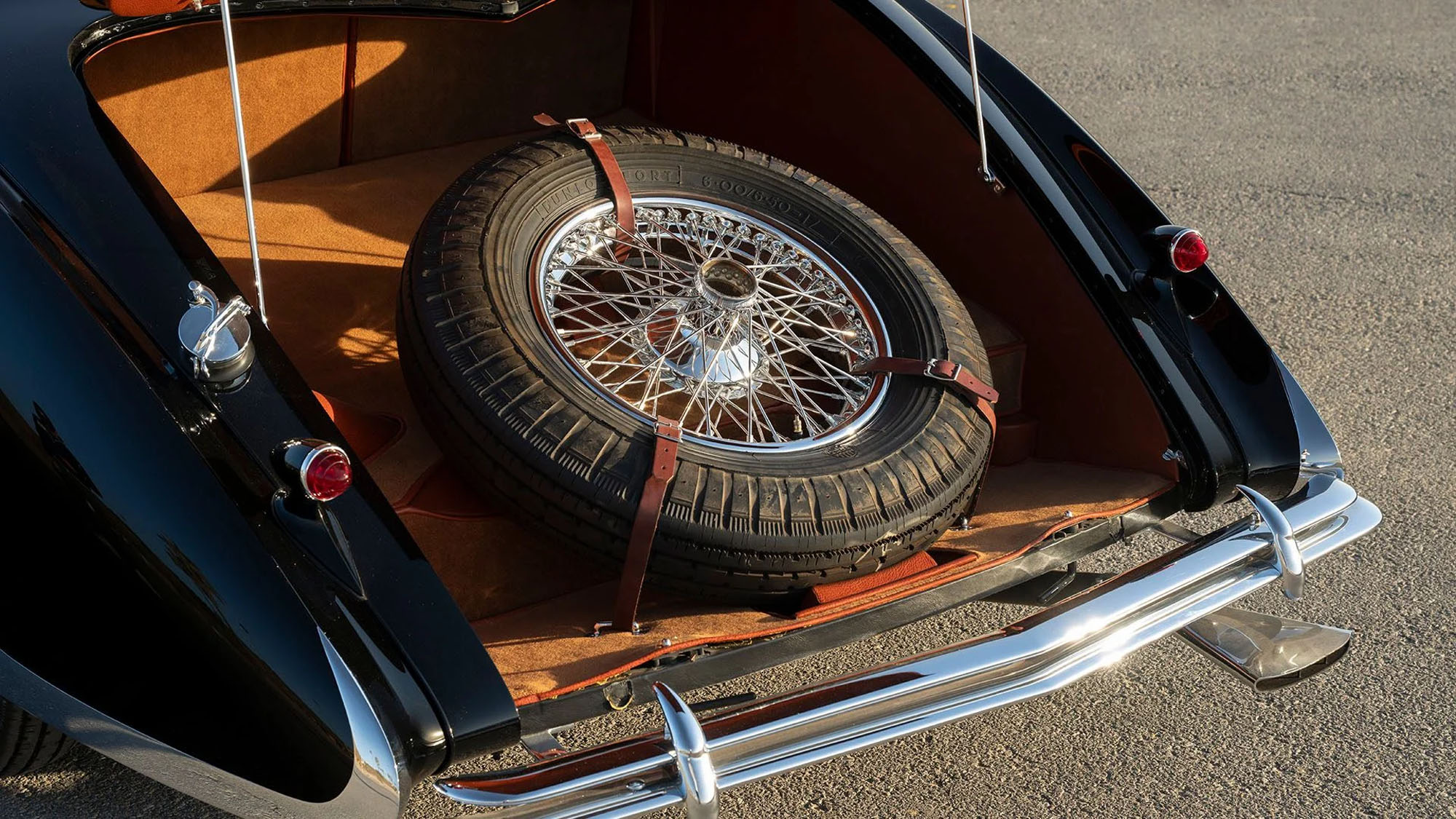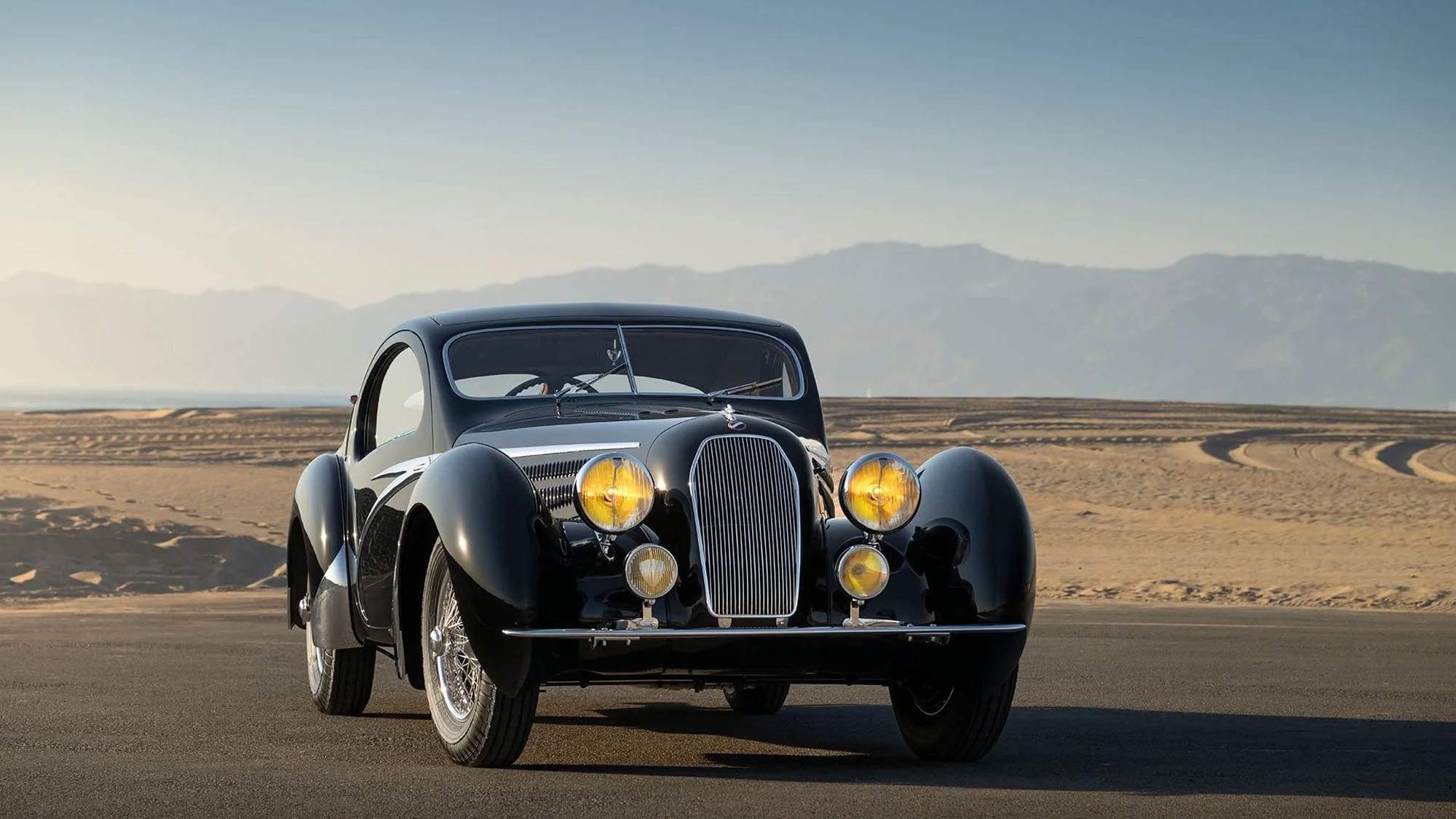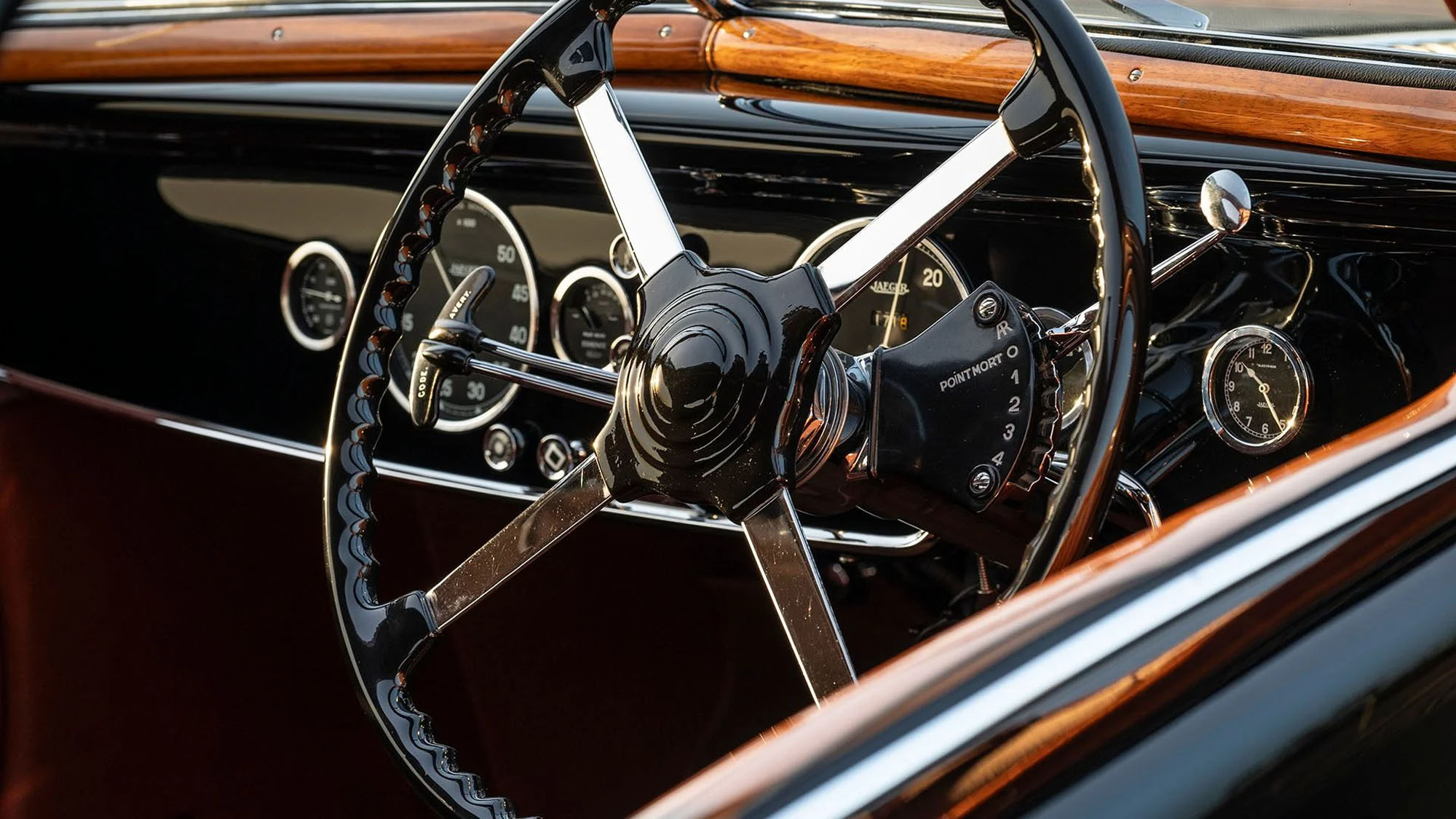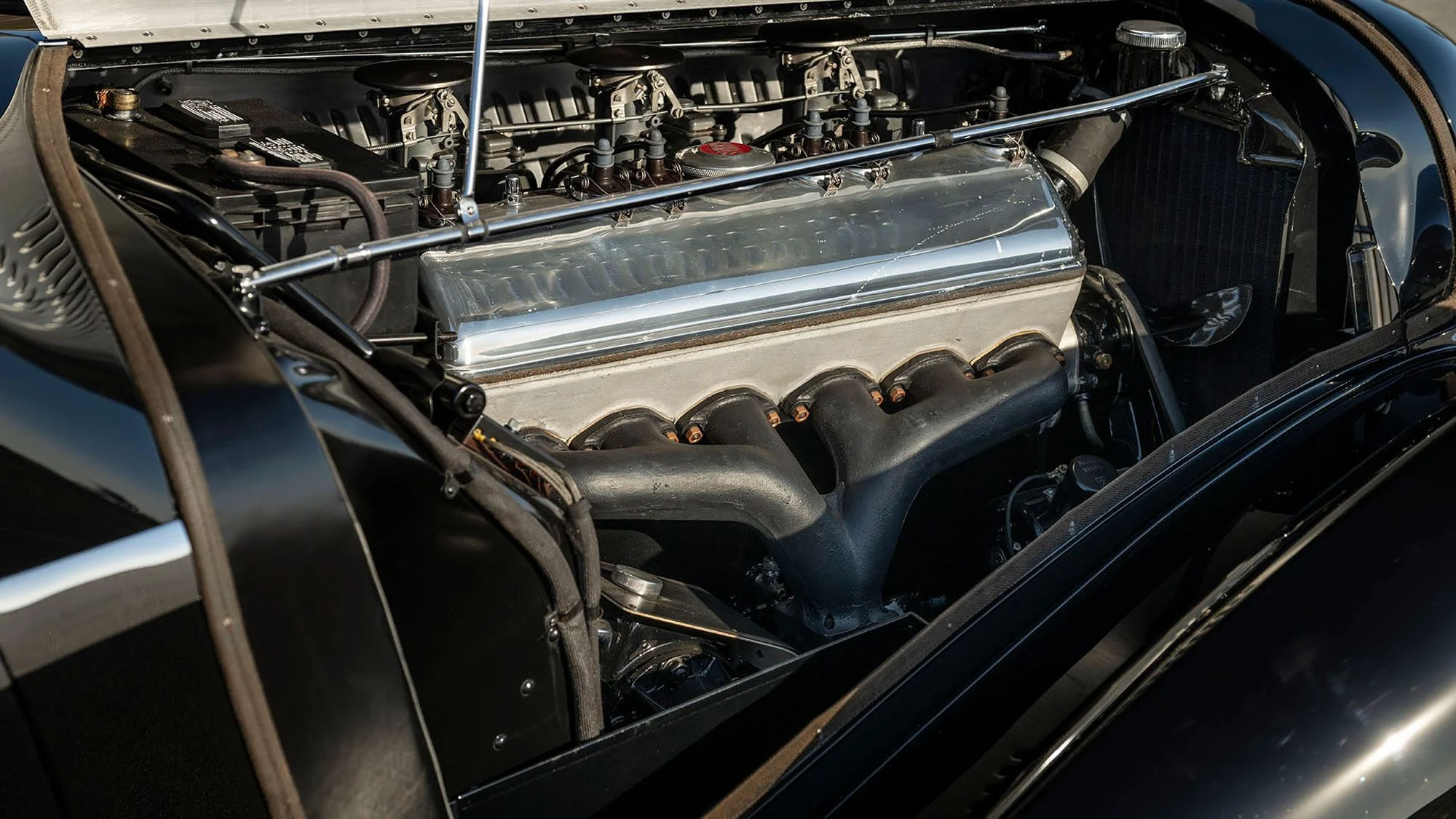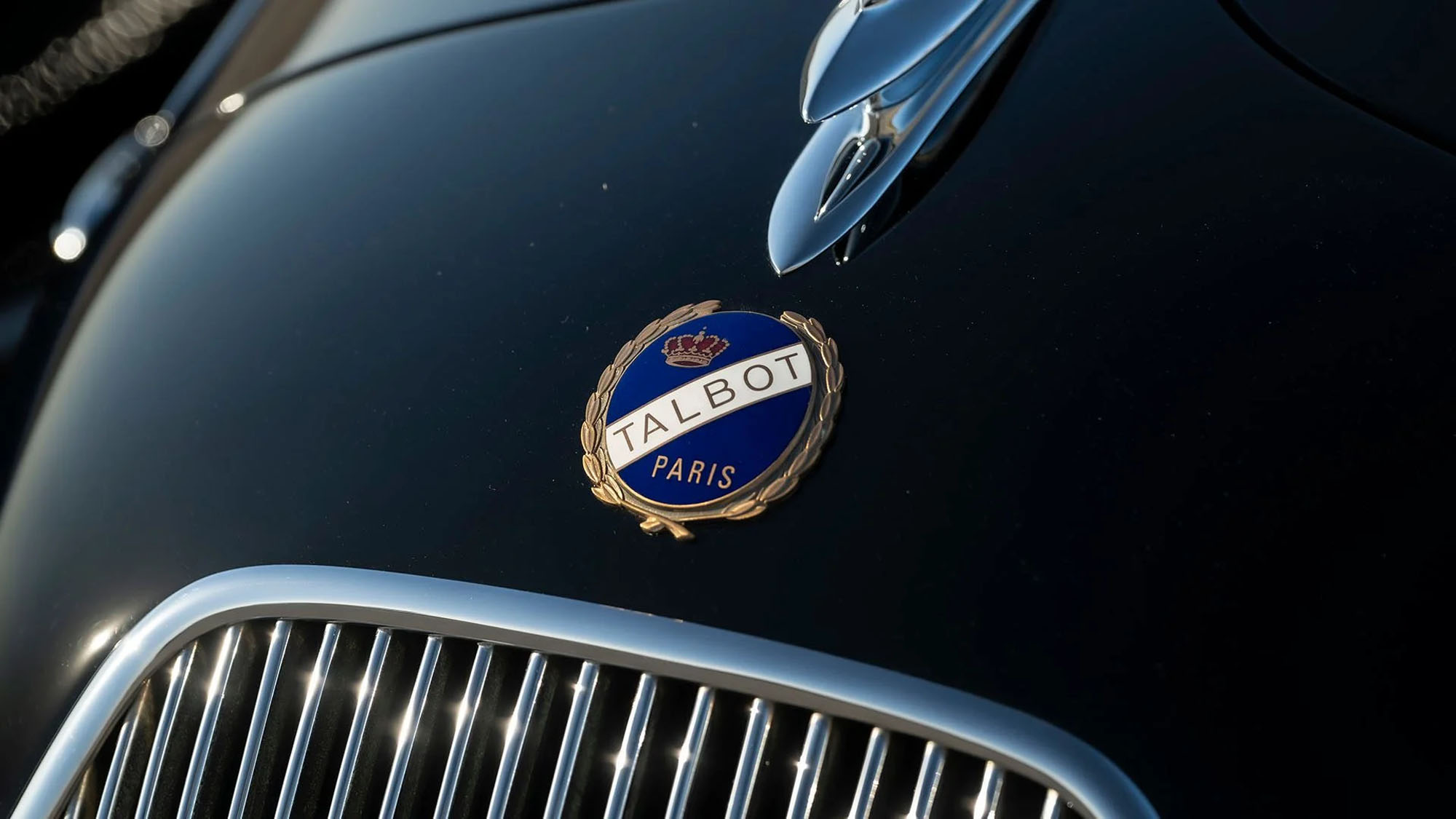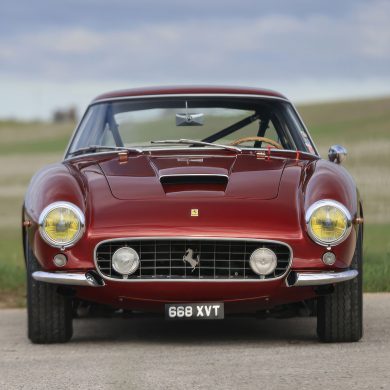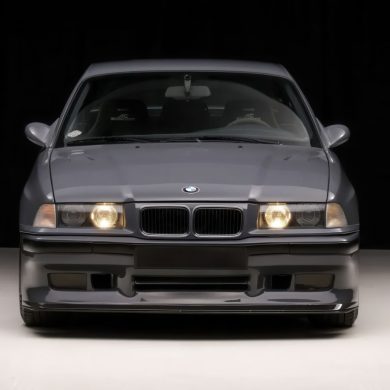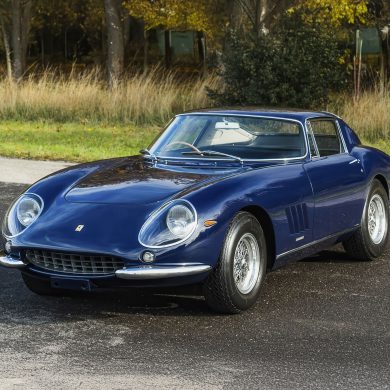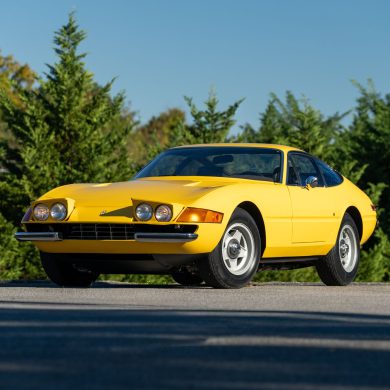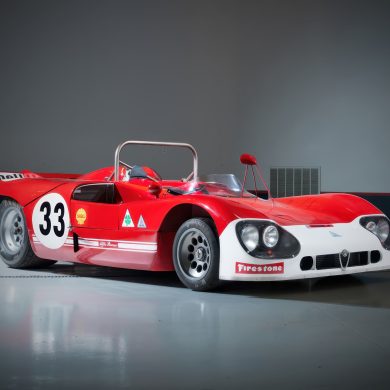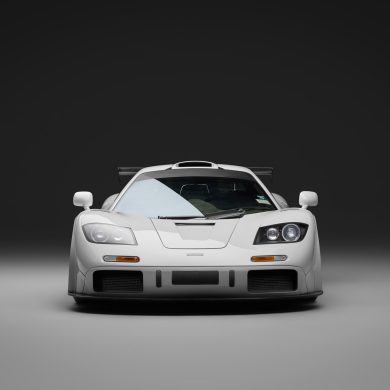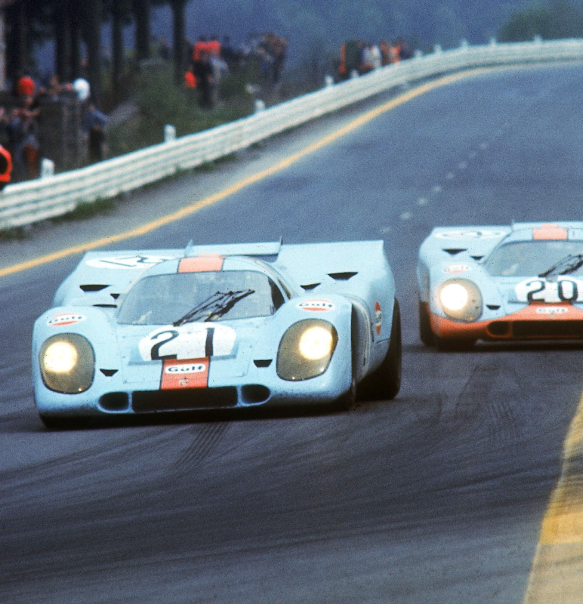Broad Arrow’s inaugural auction at The Concorso d’Eleganza Villa d’Este, set for 24–25 May, brings together over 70 curated lots in one of the world’s most scenic and prestigious settings. Held in collaboration with the world-renowned Concorso and set against the storied beauty of Villa Erba on Lake Como, the sale offers a compelling mix of coach built pre-war masterpieces and iconic post-war legends, all in the vibrant atmosphere of one of the world’s premier automotive events.
1938 Talbot-Lago
Among the highlights are some of the most outstanding examples of automotive design and engineering from both eras. Leading the pre-war offerings is the sculptural brilliance of the 1938 Talbot-Lago T150 C Lago Spéciale Teardrop Coupé by Figoni et Falaschi, widely regarded as one of the most breathtaking examples of pre-war coach-built artistry.
Chassis No. 90034
By late 1932, Talbot-Darracq in France was nearing collapse under British STD ownership. Sent to assess the situation, Italian-born Anthony Lago found a demoralized workforce, poor-quality cars, and a failing operation. Yet he saw potential. Instead of recommending closure, Lago proposed becoming managing director with a two-year option to buy the company at 1933 value. The STD board accepted, unaware of Lago’s real intentions. He returned to France in late 1933 and, by 1935, exercised his option by assuming an old £500,000 debt, gaining control without direct payment. Meanwhile, he revitalized Talbot—streamlining models, empowering engineer Walter Becchia to improve engines, and replacing outdated gearboxes with advanced ones he held patents for. Most notably, he enlisted designer Joseph Figoni to create striking new bodies, including the T150 Grand Sport, unveiled at the 1934 Paris Salon to acclaim. Racing success followed, transforming Talbot into a sought-after marque with Lago at the helm.
The T150 C and T150 C-SS Chassis
The Talbot T150 Grand Sport remained in production for about 18 months before giving way to two new chassis unveiled at the October 1936 Paris Salon. Anthony Lago and engineer Walter Becchia introduced the T150 C-SS, a high-performance, 4.0-liter sportscar chassis available only as a bare frame for custom coachwork. Alongside it was the T150 C, mechanically identical but with a longer 295 cm wheelbase, allowing for more spacious interiors or elegant, flowing body designs—ideal for luxury coachbuilders. The 3.0-liter engine featured an advanced pent-roof cylinder head, inclined valves, and delivered 100–110 horsepower, depending on the carburetor setup. Its performance rivaled that of the Delahaye 18-CV and held its own against the Bugatti T57. Despite its quality and innovation, the T150’s high price—78,000 francs—positioned it as a premium offering. The model’s consistent mechanical specifications and elegant styling helped cement Talbot’s place in the luxury performance market of the 1930s.
Figoni, the Coachbuilder
Sometime around 1931, Joseph became a personal friend of Luigi Chinetti who ran the small and underfunded Alfa-Romeo operation in Paris. In 1932, Chinetti sent the famous racing driver Raymond Sommer to Figoni to have his Alfa-Romeo 8C 2300 chassis 2111018 rebodied to Le Mans specifications. The car won the 1932 race with Chinetti and Sommer at the wheel. For 1933, Sommer’s body was transferred to 8C 2300 chassis 2211109 that then proceeded to win Le Mans once again, driven by Tazio Nuvolari and Sommer. Suddenly, Figoni was the hottest name in French racing circles. Clients became a who’s-who of legendary drivers, and for the next three years, the Figoni works virtually became an extension of the French Alfa-Romeo enterprise.
Design 9222
The star, the Figoni design that eclipses all else, remains the streamlined, two-seater coupé body that has become universally known as the Goutte d’Eau, which means water drop in French, now translated as Teardrop. It is a design of such breathtaking beauty that it has become one of the most iconic automobiles of all time. A maximum of thirteen are believed to have been built on the T150 C-SS chassis, two on the T23 Baby 4.0 Liters chassis, and only one T150 C, namely chassis 90034, the subject of this discussion.
There were three Jeancart designs: number 9220 with enclosed fenders front and rear, 9221 with exposed front wheels and enclosed rear wheels with fender skirts, and 9222 with no fender skirts and all four wheels exposed. On T150 C chassis 90034 the wheels are exposed, and it was therefore bodied to design 9222 and not 9221 as has been stated elsewhere.
Enter Antoine Schumann
In 1925, Luigi Chinetti, disillusioned with fascism in Italy, chose to remain in France after working as a mechanic for Alfa-Romeo’s racing team. Operating from Alfa’s Paris base, he sold an 8C 2300 to driver Raymond Sommer, securing a co-driving role in their 1932 Le Mans victory. This win marked the beginning of a lifelong friendship with designer Joseph Figoni. Later, Chinetti became a Talbot-Lago sales agent and received exclusive rights to sell Talbot-Lago chassis with Figoni et Falaschi’s teardrop bodies in France. In 1938, he sold chassis 90034 to banker and racer Antoine Schumann for 165,000 francs. Schumann, amidst a divorce, may have purchased the car as a personal consolation. The vehicle featured design 9222—sportier than its predecessor—and was finished in rare metallic dark blue with Havana leather upholstery and custom touches, including a unique chrome sweep spear and free-standing headlights. Its elongated wheelbase enabled Figoni to craft flowing, elegant lines, resulting in one of the most harmonious automotive designs of the era. When Germany invaded France in 1940, Schumann, being Jewish, fled to Egypt, joined the French Resistance, and the prized car was hidden to avoid Nazi confiscation. The T150 C Jeancart coupé remains a masterpiece of 1930s design and engineering.
Frédéric Damman and the 24 Hours of Spa
Paris was liberated on 19 August 1944, but fighting continued in Europe until Germany surrendered unconditionally on 7 May 1945. It is not known when Antoine Schumann returned to France, but it seems that he kept 90034 until sometime in late 1946 or early 1947. Paul Frère, the late racing champion and noted automotive journalist, remembered seeing 90034 in Brussels in 1946 or 1947 where it was for sale with the Garage Masuy, located in the rue de Stassart, close to the Porte de Namur in downtown Brussels. The car was apparently in nigh on perfect condition, which is consistent with the fact that it had been laid up during the War and had not seen much use since its delivery in January of 1939.
Sometime in 1947, chassis 90034 was purchased by Frédéric (a.k.a. Freddy) Damman, owner of the Magasins Butch clothing stores which provided him with the wherewithal to finance his hobbies as amateur pilot and race driver. 90034 received registration 2536, and Damman had the car repainted in gray, after which he prepared it for participation in the 1948 Belgian Grand Prix, Les 24 Heures de Spa, which took place on July 10 and 11. Chassis 90034 was entered in the four liter category and given race number 92. With Damman and co-driver and mechanic Constant Debelder at the wheel, the car placed first and won its class—an impressive result for a nine-year-old car.
Gaston Garino
The lucky buyer in July 1979 was Gaston Garino who had worked at the Hispano-Suiza factory in Bois-Colombes. In the early 1950s, Garino purchased an old garage in Puteaux where he specialized in keeping Hispanos on the road. By 1979, Garino had partnered with M. Lerouvillois, and the enterprise had become a dealer in high-end classics. 90034 was registered 1551-HN-92 by Garino, using the chassis identity of T150 C-SS chassis no. 90121, a Pourtout-boded car, on the registration document. This subterfuge may have been performed for customs reasons. Chassis number 90121 was an obscure car at the time as it was not finished until October 1944 after the French Liberation and had been exported to the USA in 1953.
Original Identity
On 14 May 1980, and still using the identity of 90121, chassis 90034 was re-registered 543-DAL-75 and sold to film producer and businessman Michel Seydoux, a famous early French collector in Clausonne in the Alpes-Côte d’Azur region. The car was auctioned by Poulain-Le Fur on 16 December 1981, and passed from Seydoux to Yves Rossignol, an avid motoring enthusiast of little means. Once again, 90034 received a new registration, namely 1938-KB-13. Rossignol kept 90034 for 23 years. During that time, the car received a two-tone black and burgundy livery but was subsequently repainted in a single shade of black. Importantly, it remained unmolested and complete, and had never received an actual restoration. In 1998, thanks to the help of the Talbot Club and its President Dominique Dupont, the original identity of 90034 was re-established.
In 2004, Antoine Rafaëlli, the legendary author of Memoirs of a Bugatti Hunter, contacted Toby Ross, another car sleuth, telling him that he had seen a Teardrop in Marseille some years back, and that it belonged to someone called Yves Rossignol. They located Rossignol in a garage in Nice where he was making security bars for windows. A friendship was established, and eventually, Rossignol agreed to sell.
In July 2004, chassis 90034 sold to Marc Caveng of 135 Route de Chêne, Chêne Bougeries, a collector-dealer based in Geneva, Switzerland, who repaired the engine head, renewing the valves. In 2005, Caveng sent 90034 to auction in Monterey, where it sold to the late John O’Quinn.
90034 was then sent to RM Auto Restorations for a comprehensive restoration. The body was refinished in a deep luminous black, while the original tobacco leather was renewed in the same shade and the original wood trim was kept and refinished. The car was extraordinarily complete, so virtually all body panels remain original. The engine and mechanicals were fastidiously reconditioned. After the passing of John O’Quinn in October 2009, chassis 90034 was sold to its current owner in August 2010 during Pebble Beach Car Week.
More Info
Go HERE


